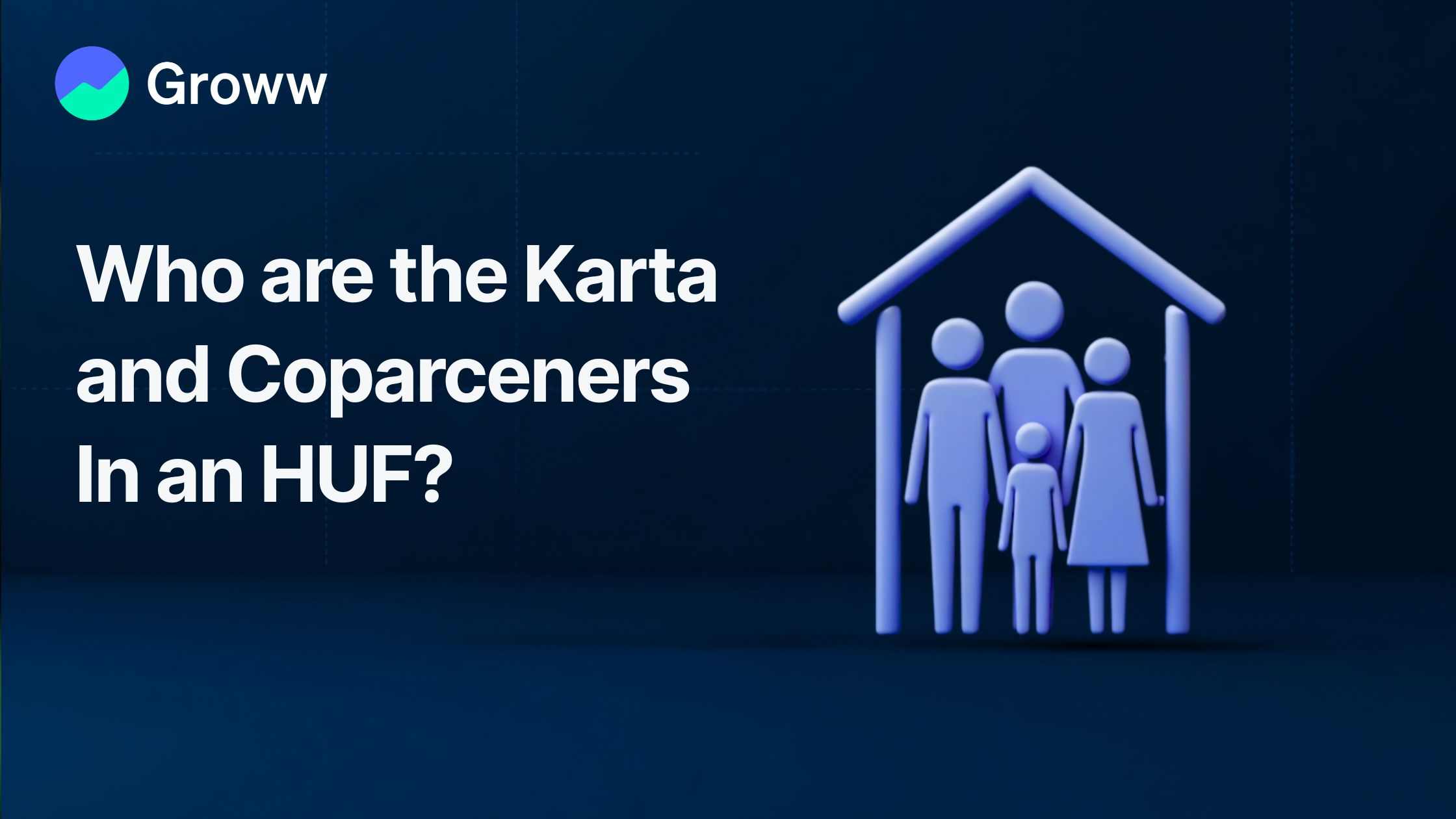Who are the Karta and Coparceners In an HUF?

A Hindu Undivided Family (“HUF”) is a separate tax entity treated as a “person.” It is a family unit consisting of lineal descendants of a common ancestor within 4 degrees. One of the key aspects of an HUF is its structure, which consists of Karta, Coparceners, and Members.
In this blog, we’ll explain who Karta and Coparceners are in an HUF and their roles and responsibilities.
Who is a Karta?
“Karta” is the head of the HUF, typically the senior-most male or female coparcener of the family.
Traditionally, only male coparceners had the right to become Karta. However, the Hindu Succession (Amendment) Act, 2005, amended Section 6 of the Hindu Succession Act, 1956, to grant daughters equal rights as coparceners in the HUF property. Consequently, the eldest female coparcener can now be the Karta, provided she is the senior-most member.
Also Read : What is HUF & Benefits?
Who is a Coparcener?
A coparcener is an HUF member with a birthright (joint heir) to the ancestral property, regardless of gender. All coparceners can be HUF members, but not all HUF members can be coparceners.
Let’s understand this with a family tree.
- Rajesh (Karta) - First Generation
- Raghav (Arjun's son) - Third Generation
- Ved (Raghav's son) - Fourth Generation
- Arjun (Rajesh's son) - Second Generation
In the above example, all members and children of the first four generations (Rajesh, Arjun, Raghav, and Ved) are coparceners. Wives of all coparceners can be HUF members, but they cannot be coparceners, as they don’t have a birthright to the ancestral property, unlike their children.
Roles & Responsibilities of Karta
Below are some of the key roles and responsibilities of Karta towards an HUF.
- Management of HUF Property: Managing the family’s property, including both immovable (such as land and buildings) and movable assets (such as cash, investments, and shares).
- Legal Representation: The Karta represents the HUF in all legal matters, including signing contracts, appearing in court, and entering into business agreements.
- Succession: When a Karta passes away, the role typically goes to the eldest coparcener of the HUF.
- Financial Decisions: Responsible for managing all the financial affairs of the family.
Also Read : Difference Between Individual and HUF Demat Accounts
How to Open a Demat Account for Partnership Firms & Required Documents?
Rights of Coparcener In an HUF
- Right to Demand Partition: Under the Hindu law, a coparcener, whether major or minor, has the right to demand a partition of the HUF property. The Karta is legally obligated to comply with the demand for partition if any coparcener requests it.
- Right to Challenge Decisions: A coparcener has the right to challenge decisions made by the Karta or other members if they are taken without consent or violate the interests of the family.
- Right to Share in the HUF Property: A coparcener is entitled to a share in the HUF property, whether movable or immovable. However, it is not fixed and will be determined once the partition occurs, based on the number of coparceners at the time of partition.